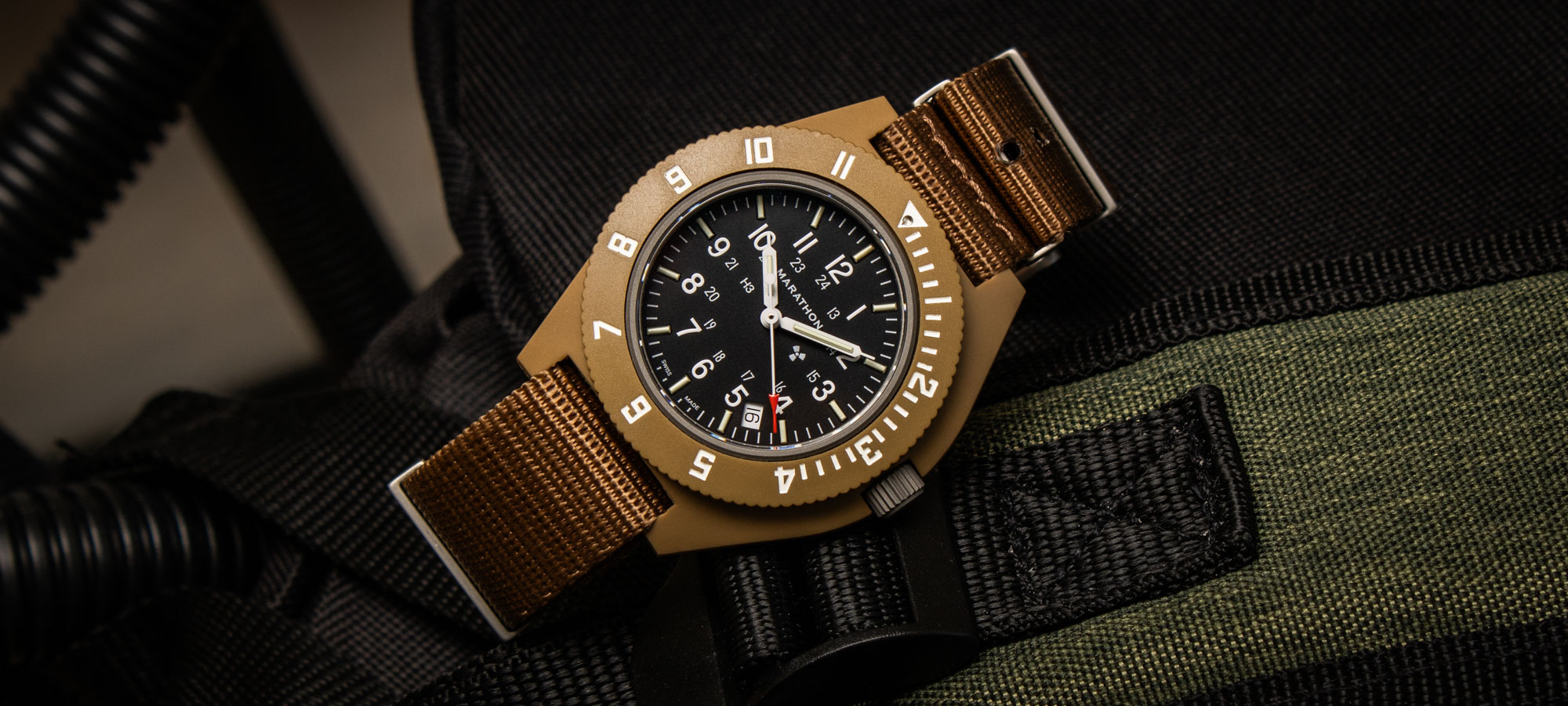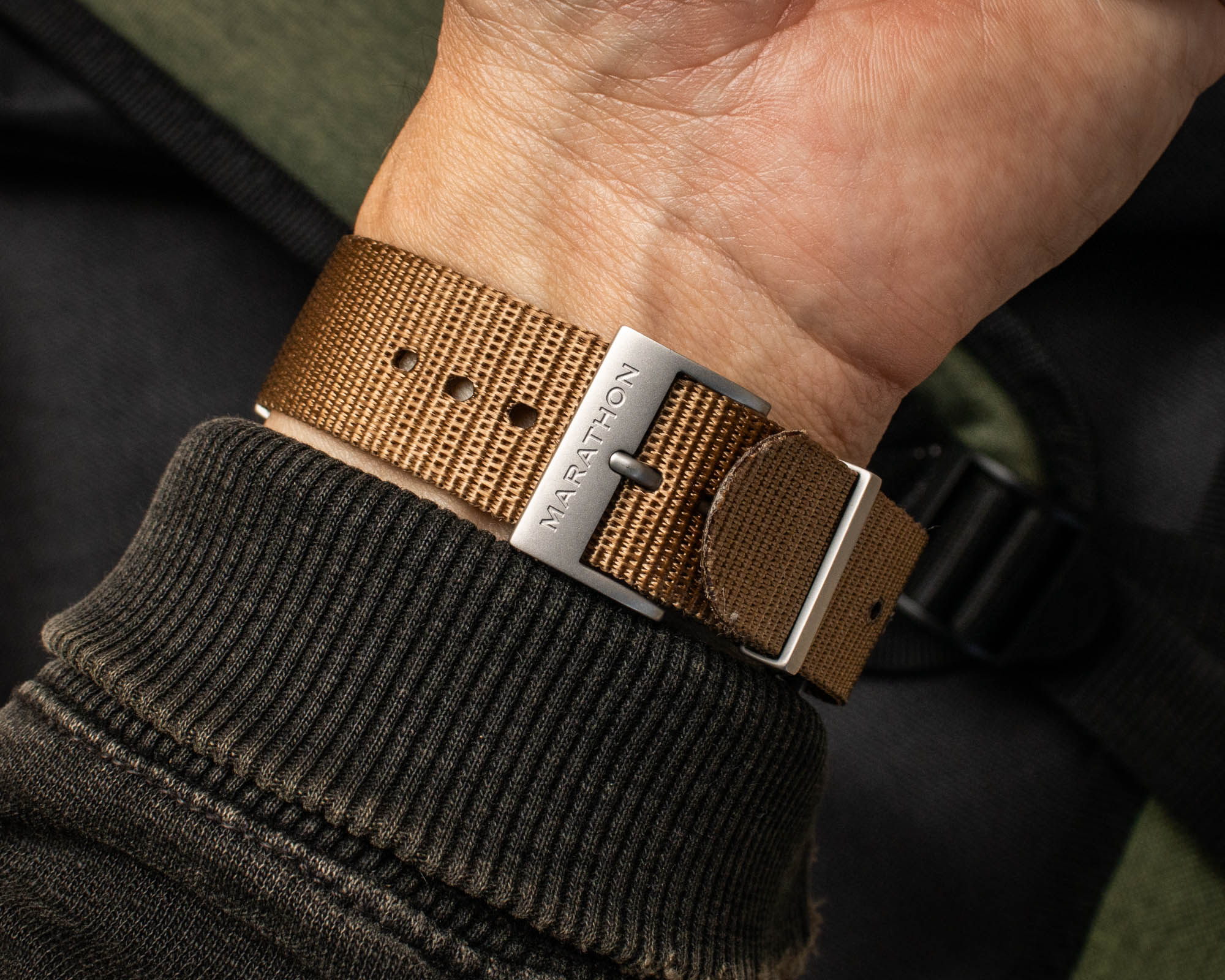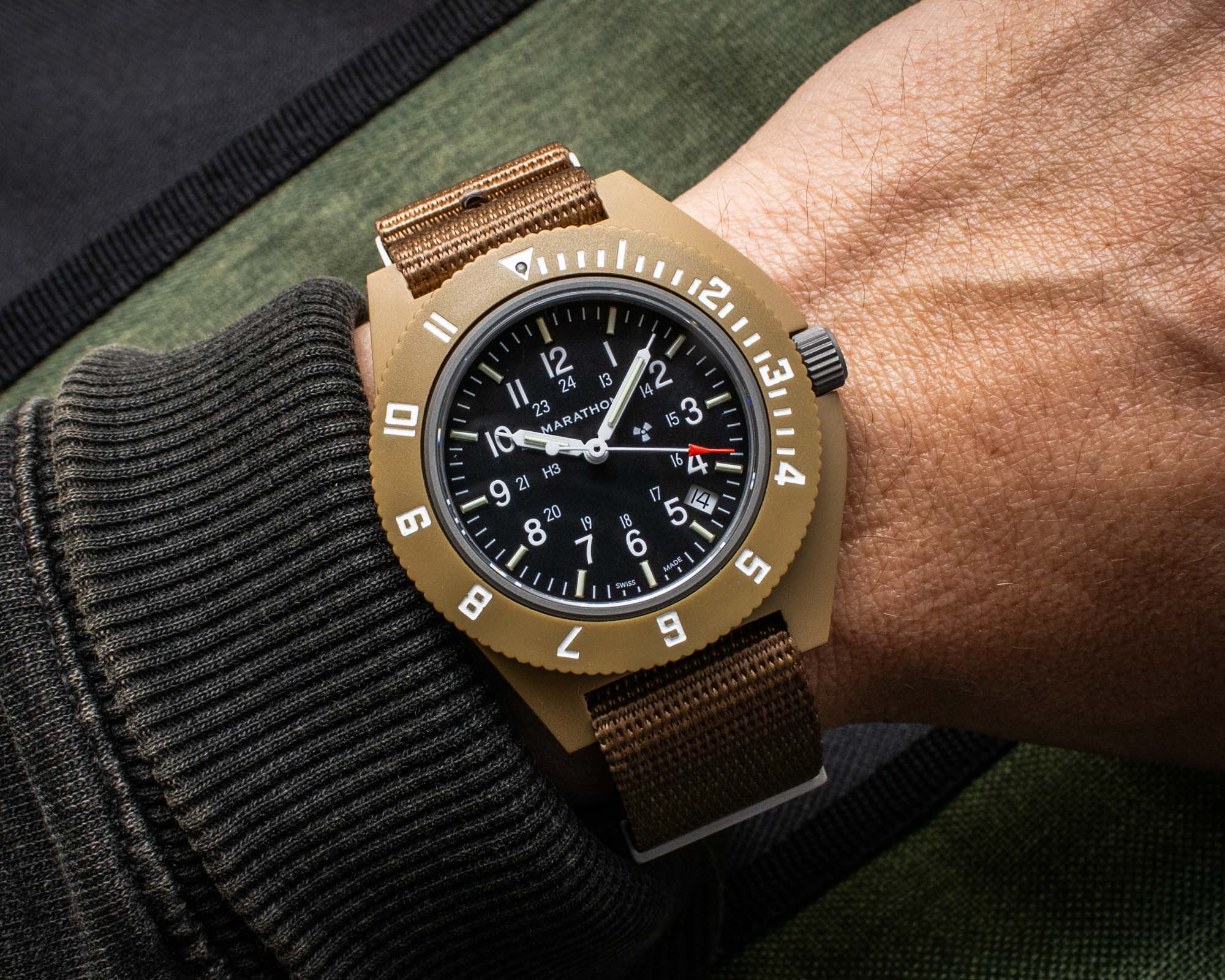
Originally developed in collaboration with Kelly Air Force Base in 1986, the Marathon Navigator is often regarded as one of the darlings of the industry, as allows owners to get their hands on a true mil-spec watch, which comes from a brand that primarily creates products to fulfill government contracts. Over the years, the Navigator has evolved, although recent improvements have been accompanied by higher prices, and the current Marathon Navigator now finds itself in a highly competitive category. So, what exactly has changed on the fan-favorite Navigator, and is it still the attainable industry darling that first won the hearts of enthusiasts?
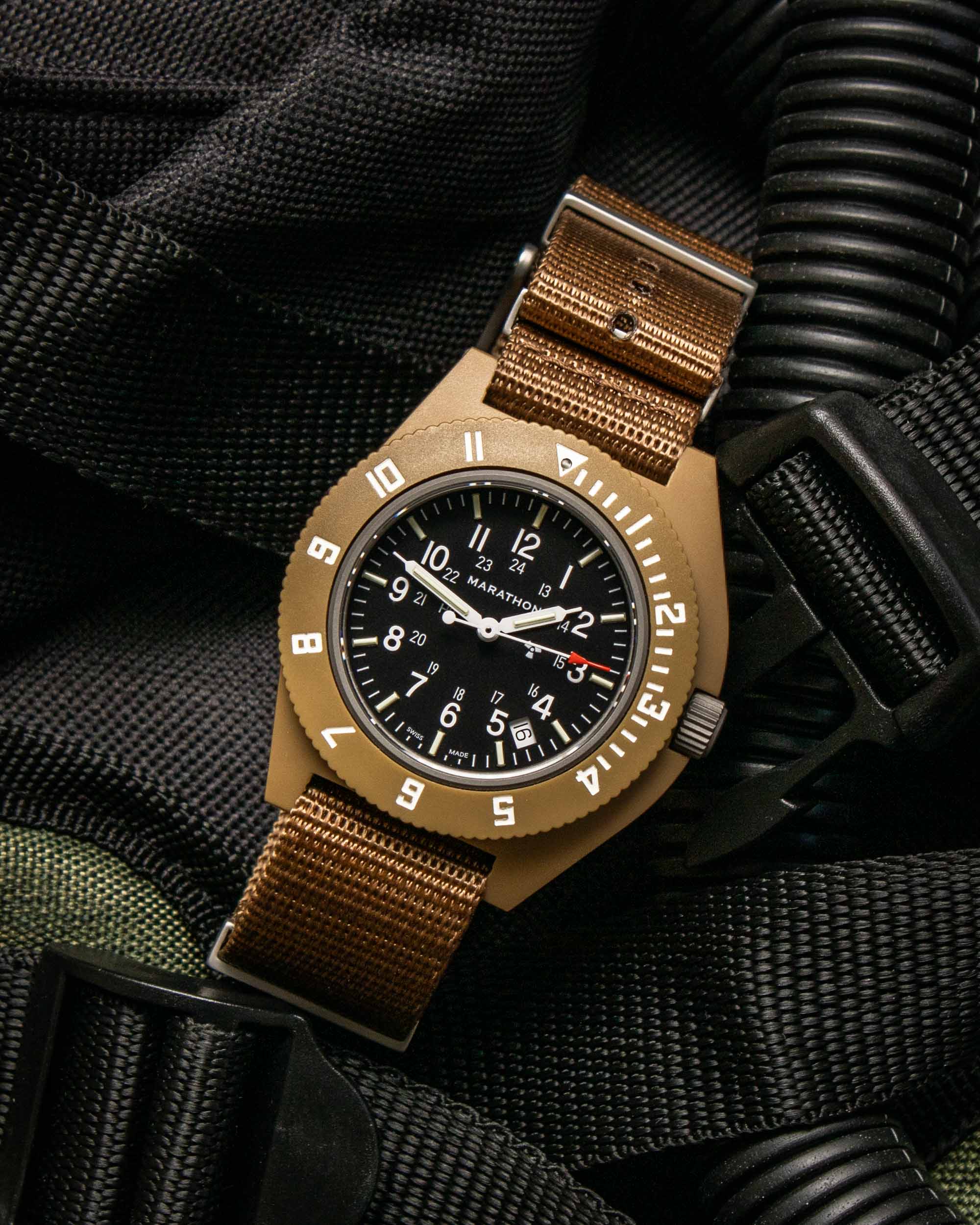
While the very first Marathon Navigator watches had steel cases, the model was updated to feature a composite case in the 1990s following a request from the U.S. Government for a more lightweight version of the design. Although Marathon has more recently revived the stainless steel Navigator (also at the request of the U.S. Government) and it now exits as a premium option within the brand’s lineup, the classic version still features a plastic case with small integrated stainless steel components, such as the crown and the thin ring that houses the crystal. That said, while the original composite Navigator was exclusively available in black, Marathon now offers the model in three different colorways that include black, sage green, and desert tan, with the latter option being the version that is featured here. Additionally, while the dials fitted to all three versions are black with white markings, Marathon offers the Navigator in both date and no-date formats, along with a few different options that relate to dial markings and the addition of military branch insignias.
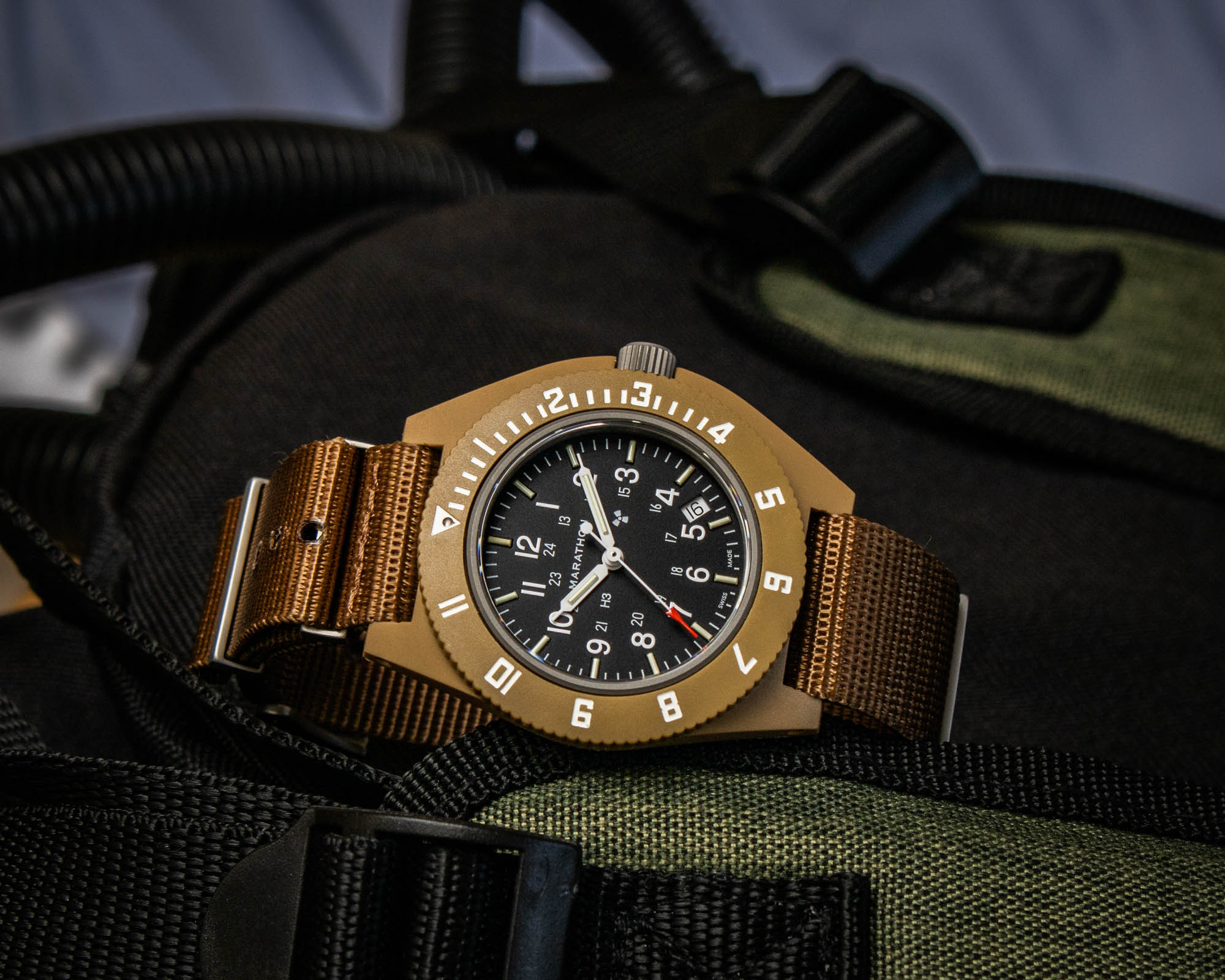
Crafted from sand-colored Fibreshell, which is a type of high-impact composite that is manufactured in Switzerland, the case of the Marathon Navigator measures 41mm in diameter by 13mm thick (or 11mm when measured from crystal to caseback), and it has 20mm lugs with an overall lug-to-lug profile of approximately 48mm. As this is a proper mil-spec watch, fixed bars are mounted into the lugs, which means that pass-through straps will be your option when it comes to compatible third-party replacements. Despite largely being made from plastic components, the Marathon Navigator does not feel cheap or flimsy in any type of capacity, although I would hardly say that it exudes a sense of premium quality, and the overall impression is purposeful and utilitarian, but in no way is it even remotely luxurious or exceedingly refined.
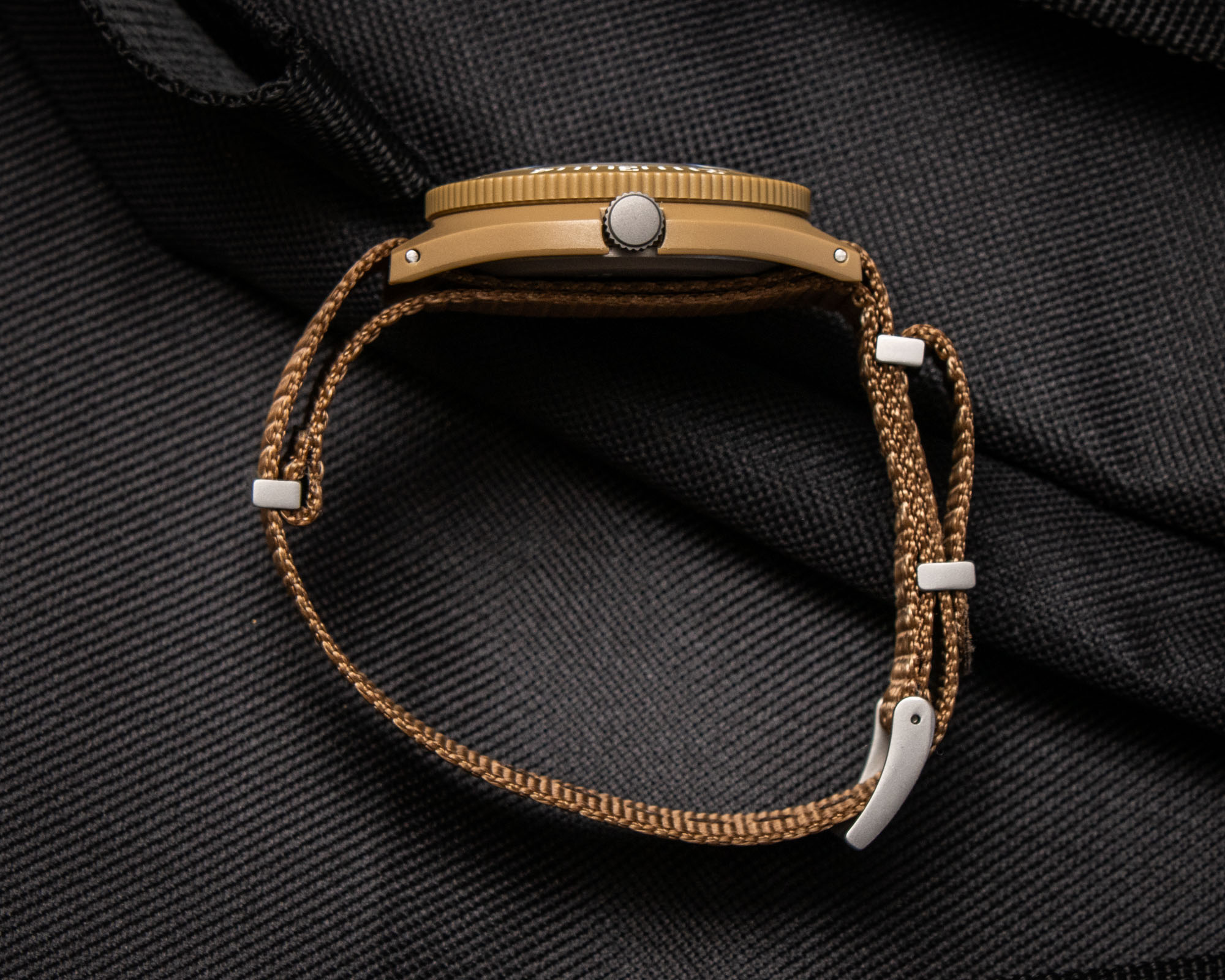
The model reviewed here is the second generation of the plastic case Marathon Navigator, specifically the reference WW194013DT-0112 (Military NSN 6645-01-699-5584, for those who are curious), and along with the additional colorways that are available for this series, the second-generation Navigator watches are characterized by three key external updates. Just like the original series, the crystal is secured against both altitude compression and decompression, and rather than being made from acrylic, the crystal is now a piece of flat sapphire for additional scratch resistance. Similarly the unsigned push/pull-style crown that sits recessed into the side of the case at 3 o’clock is now made from sandblasted stainless steel to increase its durability. The third key external update pertains to the caseback of the watch, and the stainless steel snap-on caseback (complete with the obligatory mil-spec wall of text) now features an easy-access battery door that can be opened using a screwdriver, knife, or even the edge of a coin.
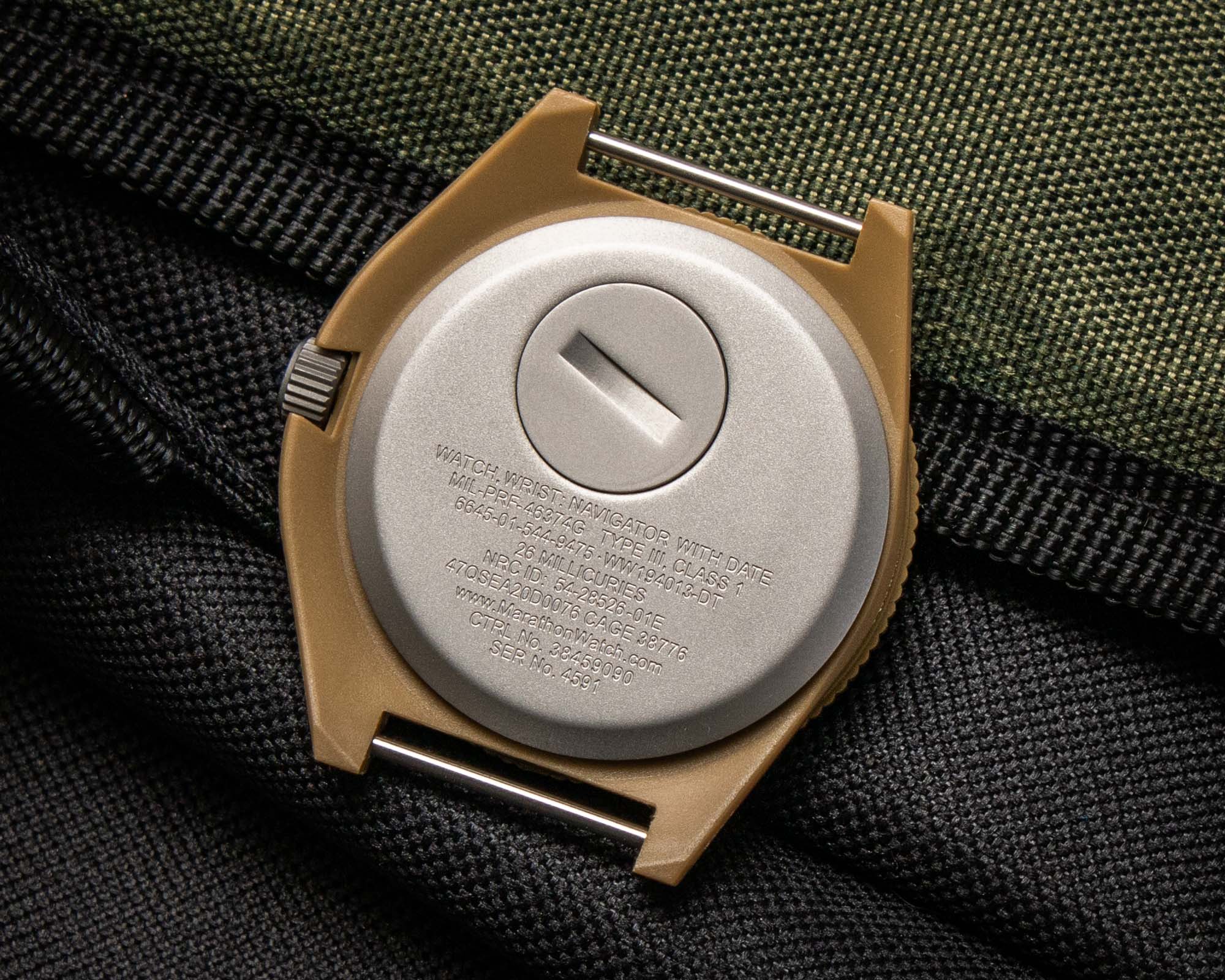
Most enthusiasts will welcome these additions, although this second generation of the Marathon Navigator is slightly heavier than its direct predecessor, and the current plastic case Navigator weighs approximately 40 grams (not including its strap). Water resistance for this generation of the Navigator comes in at 60 meters, which should be sufficient for most forms of daily contact (after all, this is a pilot’s watch), and surrounding the crystal is a bidirectional composite bezel with white recessed numerals and a small luminous tritium tube embedded within the inverted triangle at the zero marker. The bezel features a 12-hour scale, although it also includes individual minute markings for the first 20 minutes, and this allows owners to use the Navigator’s bezel for tracking short intervals of elapsed time.
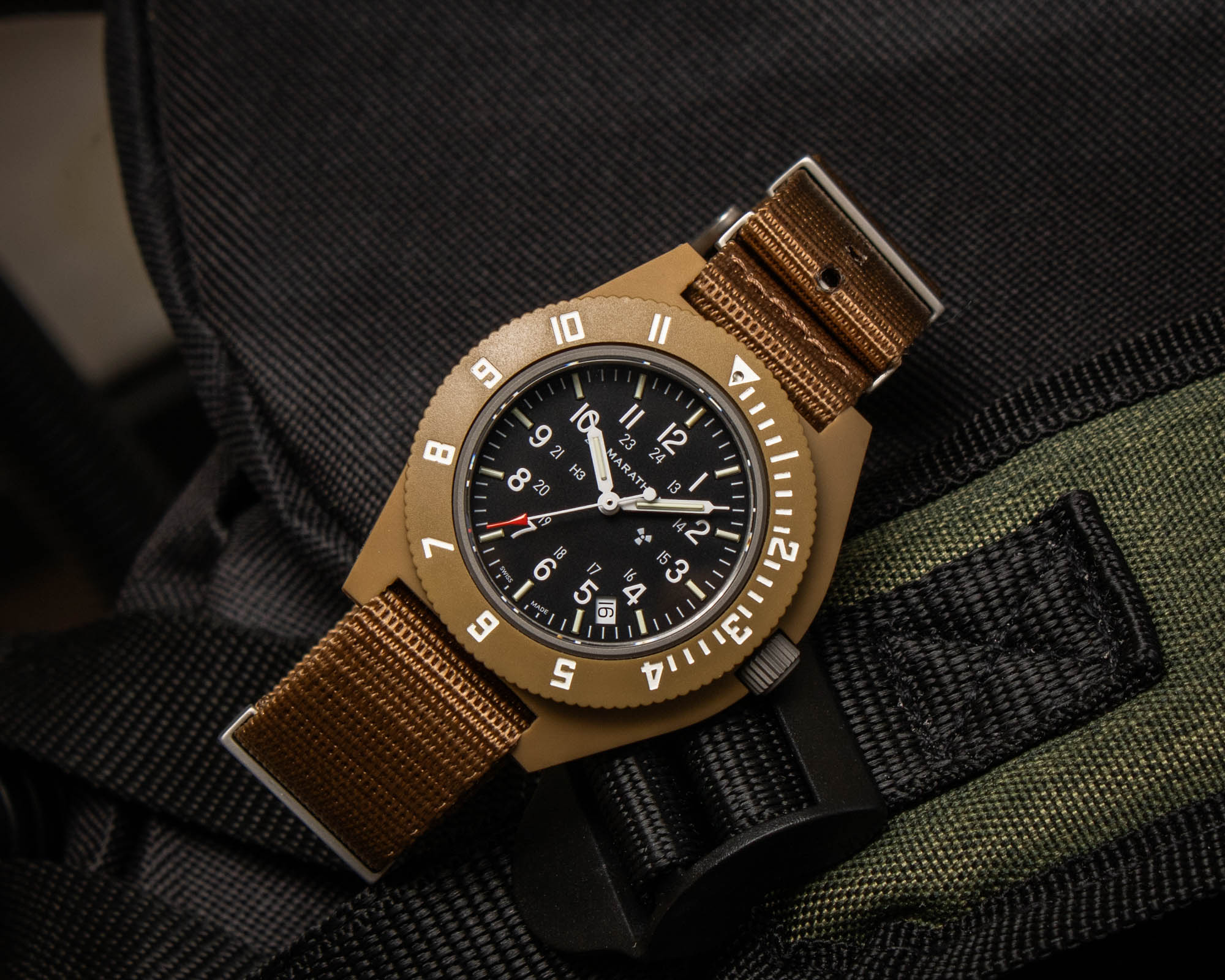
While the bezel itself is certainly functional and an integral part of the Marathon Navigator’s design, the action of its motion does leave a bit to be desired (although I’ve been told that the sample I received for review wasn’t quite up to the brand’s normal standards). The bezel is ultimately of the friction-fit variety, although there is a faint and somewhat mushy ratcheting action that can be felt during operation. Additionally, while there is certainly a sufficient amount of tension to ensure that the bezel won’t easily be knocked out of place, the tension on this particular example is rather asymmetric, and it can sometimes be a bit difficult to rotate. These difficulties are further exacerbated by the asymmetric shape of the case, which protrudes on the right-hand side to offer protection for the crown, and while I’m personally a big fan of this case profile, it does make it slightly more difficult to grip the outer rim of the bezel.
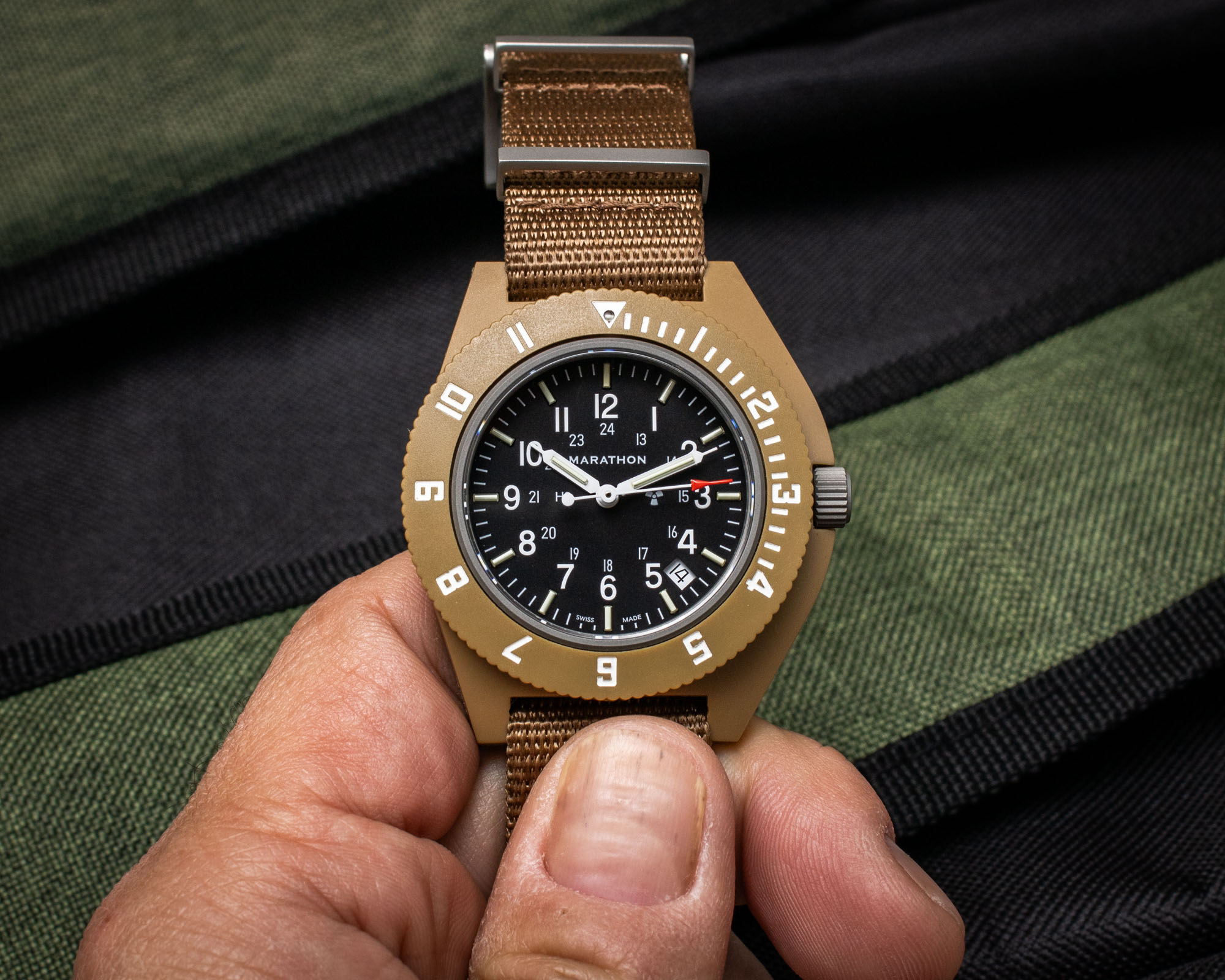
Short of implementing some type of robust ratcheting mechanism, the Navigator’s bezel was always destined to slightly too loose or too tight for some people’s preferences, and I would personally rather have a bezel that is slightly difficult to grip versus one that is constantly being knocked out of place and reduced to nothing more than a glorified fidget spinner on your watch. Given that the Navigator’s 12-hour bezel is primarily intended to display a secondary timezone, the fact that it is slightly hard to operate isn’t actually all that much of a drawback during real-world use, although it does serve as a reminder that the plastic-case Navigator isn’t Marathon’s flagship model, and certain other watches at this price point have bezels that operate with significantly more refined and precise motion.
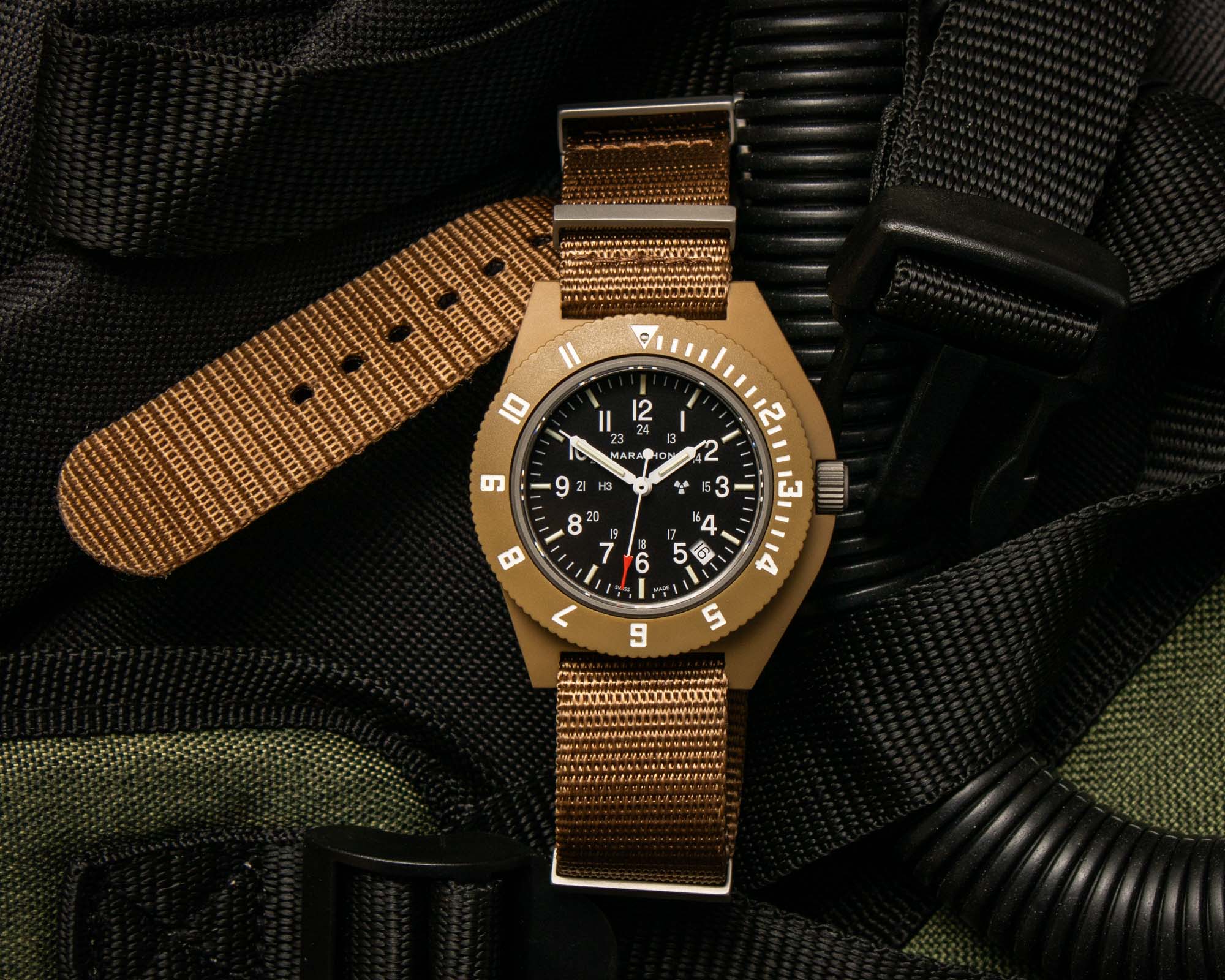
Given that the design of the Marathon Navigator is based on military specifications, its dial holds zero surprises, with a matte black surface, crisp white printing, Arabic numeral hour markers, and glowing tritium gas-filled tubes serving as additional indexes along the periphery of the dial. The white-finished syringe handset also receives a pair of tritium tubes set into the hour and minute hand, while the tip of the seconds hand is finished bright red for added visibility and contrast. On the date-displaying versions of the Navigator, a calendar window is added at the 4:30 position, and while the majority of the tritium tubes glow green, the tube placed at the 12 o’clock location glows orange to help offer a clear orientation of the time in total darkness.

When it comes to lume performance, the radioactive tritium gas will allow the dial and hands of the Marathon Navigator to glow continuously for up to 25 years, and just like other watches that use tritium tubes for their luminescence, the Navigator’s display is far less bright than what you get from something like a diver that is drenched in Super-LumiNova. Additionally, the tubes themselves are the standard round variety, rather than being the extra large bar-shaped style like what can be found on the other watches, such as the Traser P68 Pathfinder Automatic T100 and the ProTek Series 3000 field watch. While I do wish that the minute hand was slightly longer and reached the markers of the minute track, the mil-spec design of the dial combined with its use of tritium tubes results in a display that is highly legible in all lighting conditions.
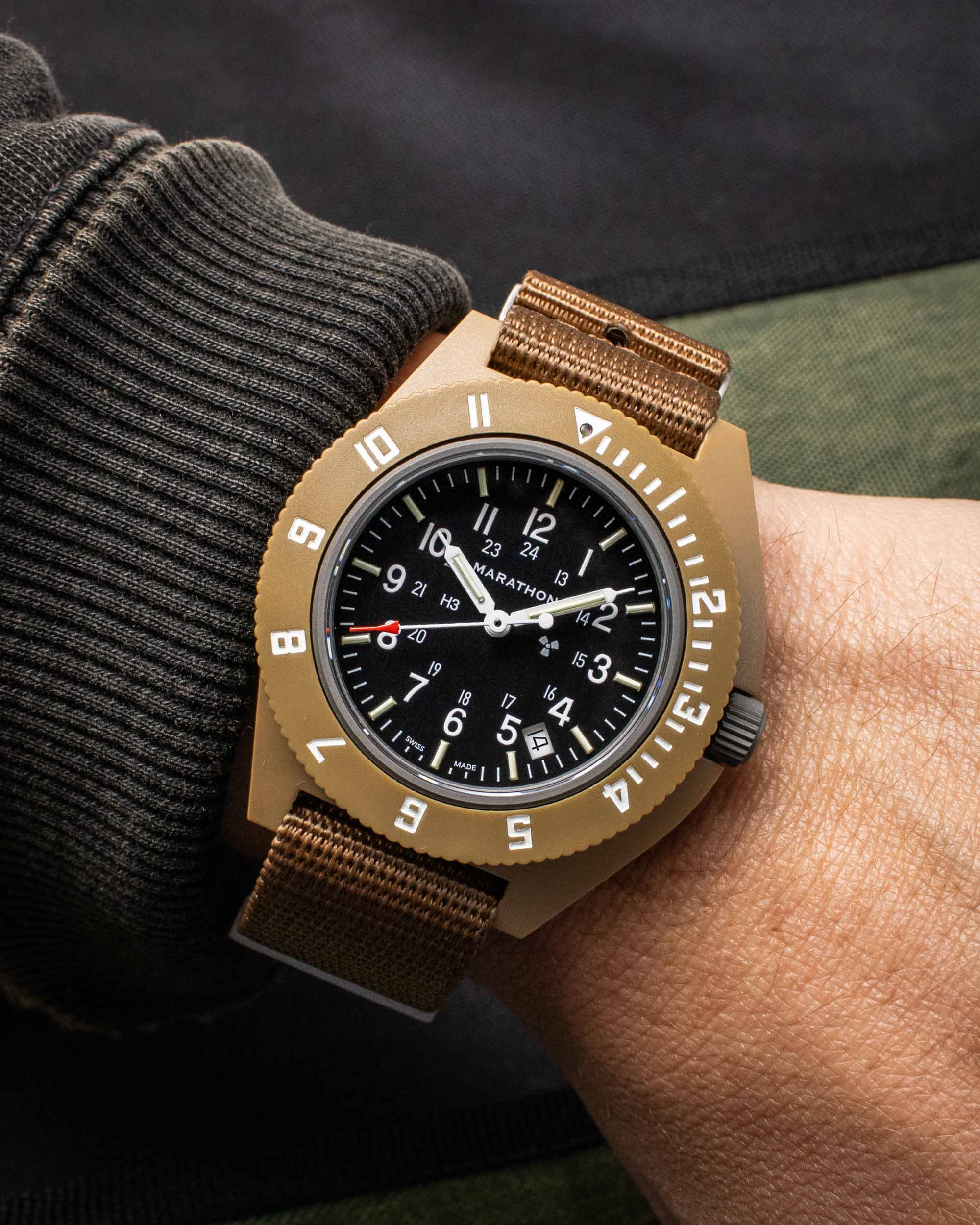
A final key update that accompanies this second generation of the plastic case Marathon Navigator pertains to its movement, and while it’s still a traditional battery-powered quartz caliber, the Swiss ETA Cal. F06 high-torque quartz movement benefits from several important enhancements. Along with offering a battery life of approximately 68 months and an end-of-life indicator, the ETA F06 features both HeavyDrive and PreciDrive technologies for increased precision and durability. HeavyDrive is an intelligent shock-protection system that locks the seconds hands in place during impacts to prevent it from skipping, while PreciDrive is ETA’s thermal compensation technology that adjusts the motor based on the ambient temperature in order to achieve superior levels of accuracy. Despite these notable upgrades, there will inevitably be some mechanical purists who will disappointed by the use of a quartz movement, although the ETA F06 is ultimately a highly practical option for a rugged military timepiece, and since the original Marathon Navigator from the 1980s was specifically designed to be a quartz watch, the use of a battery-powered movement is ultimately true to the model’s design specifications and history.

Looped through the fixed lug bars of the Navigator is a tan-colored ballistic nylon strap, and Marathon gives its customers two different choices when purchasing the watch. The standard option is a single-piece, pass-through-style strap, while paying a small premium will get you the NATO version featured here, which includes sandblasted stainless steel hardware and a chunky signed pin buckle. The quality of the NATO strap is certainly a step above the standard pass-through strap, although given the fairly low cost of producing a nylon NATO, it would be a nice touch if Marathon simply included this upgraded strap on all of its second-generation Navigator watches, rather than forcing buyers to pay a premium for it.
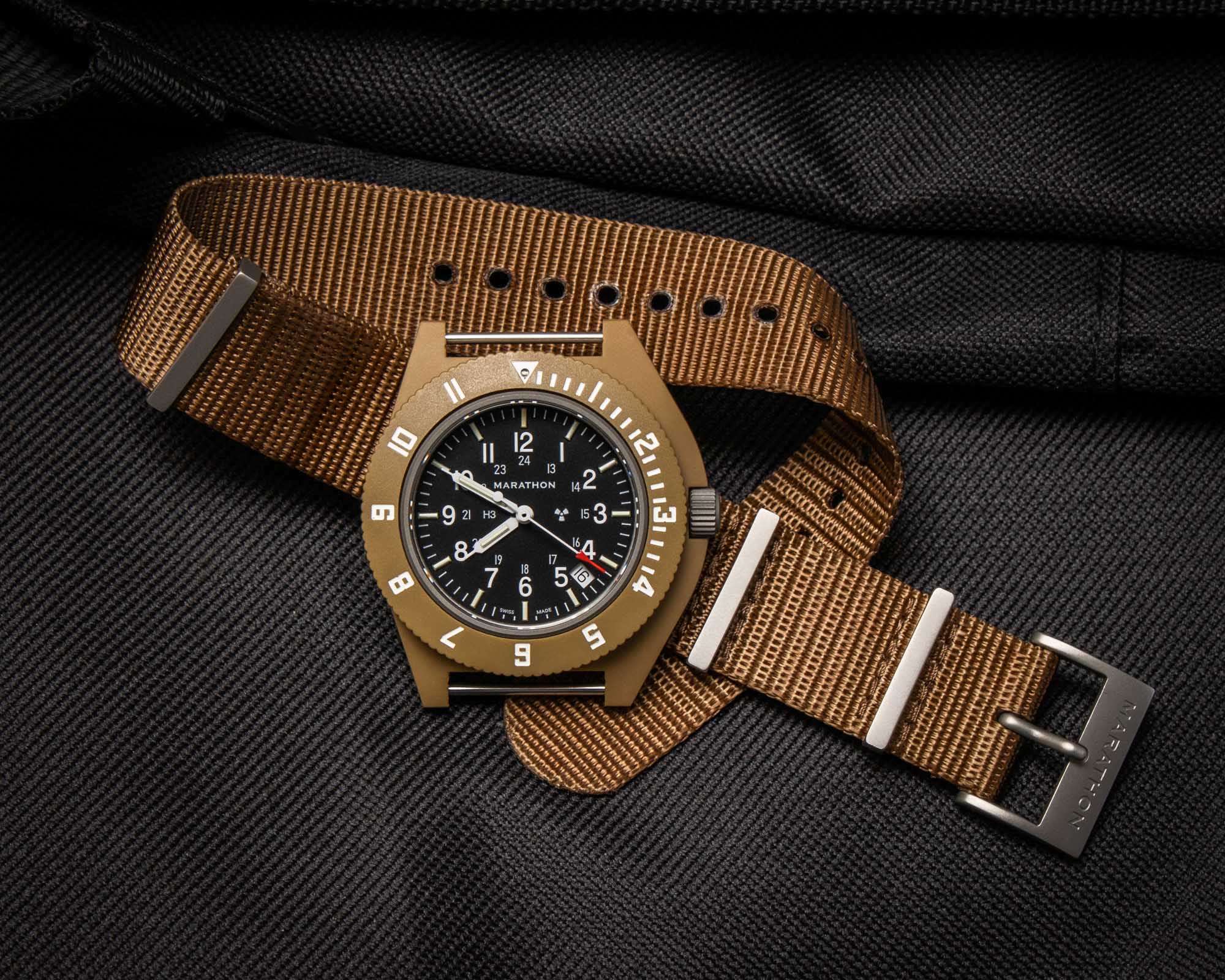
On the wrist, the lightweight structure of the Marathon Navigator makes it a joy to wear, and the fact that there is nothing precious about it means that owners can enjoy the Navigator as the utilitarian tool watch that it was intended to be, rather than worrying about the scratches and scuffs that accumulate from daily use. Admittedly, brands like Luminox, Traser, and ProTek all produce military-style tritium tube watches that objectively offer a more refined and enthusiast-driven package, although the Marathon Navigator keeps its primary focus on pure functionality with details like its enhanced Swiss quartz movement. Similarly, while you don’t get quite the same variety in terms of colorways and designs, the no-frills design of the Marathon Navigator feels strictly functional, and I struggle to think of another brand that better embodies the true ethos of the military-issued watch. With that in mind, the question that remains for the individual buyer is whether you want the actual watch that gets ordered by governments and supplied to military units, or if you would prefer something a bit more elevated in terms of its overall design and construction.
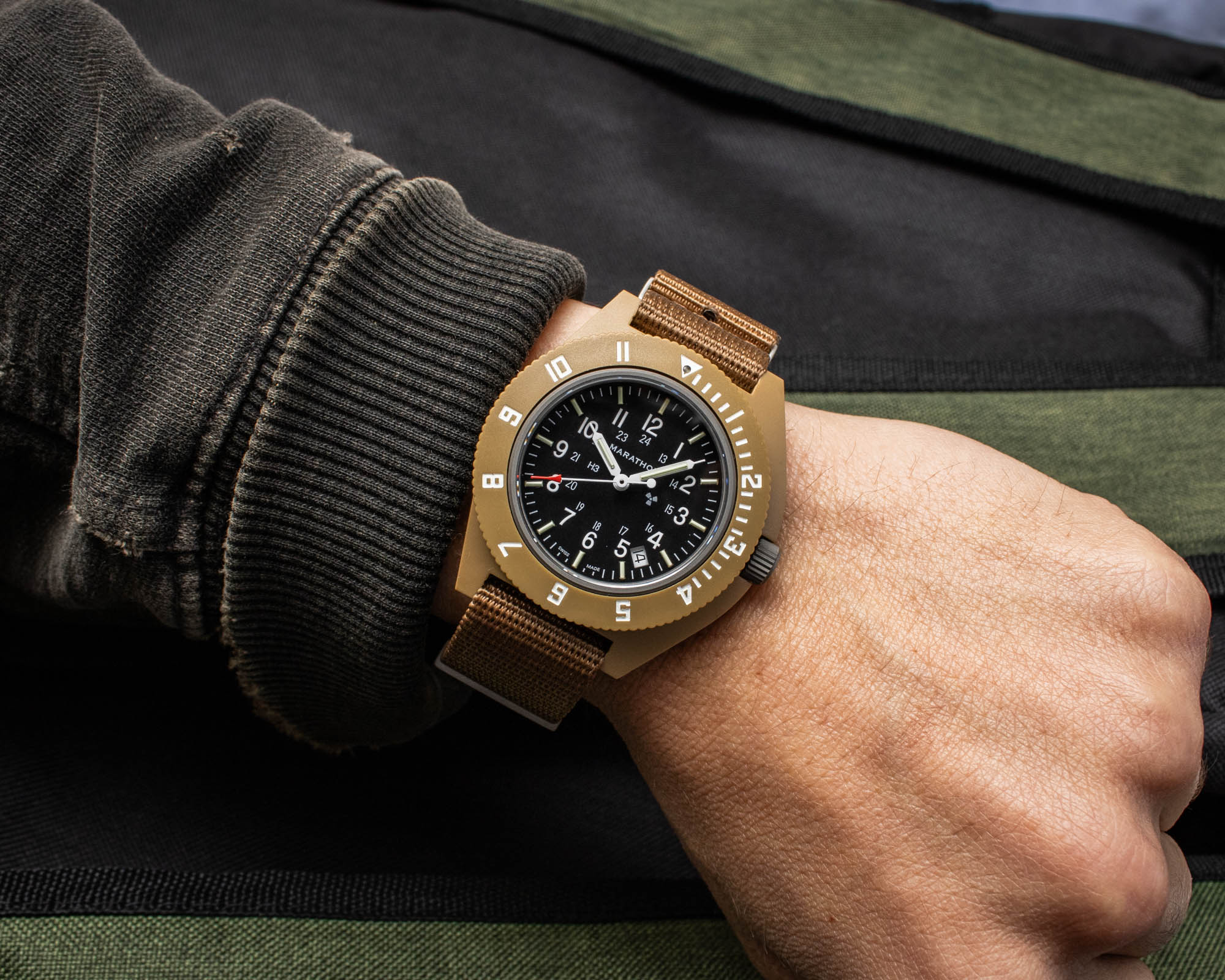
Watch enthusiasts often glorify the concept of “military-issued” but this rarely serves as a testament to superlative quality or a premium ownership experience. Military-issued watches are certainly rugged and functional, although it’s important to remember that cost is also a huge factor when it comes to securing military contracts, and while superior options always exist, they are often accompanied by prices that are too high for governments to justify the additional expense — especially considering that they will be placing orders for thousands of units, and many will be lost or damaged during active duty. In regards to the whole “military-issued” concept and government contracts in general, I’d like to remind you of a famous quote by astronaut John Glenn, who was the fifth person in history to reach outer space and the first American to orbit the Earth.
“I guess the question I’m asked the most often is: ‘When you were sitting in that capsule listening to the count-down, how did you feel?’ Well, the answer to that one is easy. I felt exactly how you would feel if you were getting ready to launch and knew you were sitting on top of two million parts — all built by the lowest bidder on a government contract.” — John Herschel Glenn Jr.
Now, this is not to say that the lowest bidder in anyway makes an inferior or lackluster product. Instead, it should serve as a reminder that the exact same supplier could likely produce a superior item if budgets allowed for it, and many of Marathon’s more expensive watches offer a significantly more refined overall package.
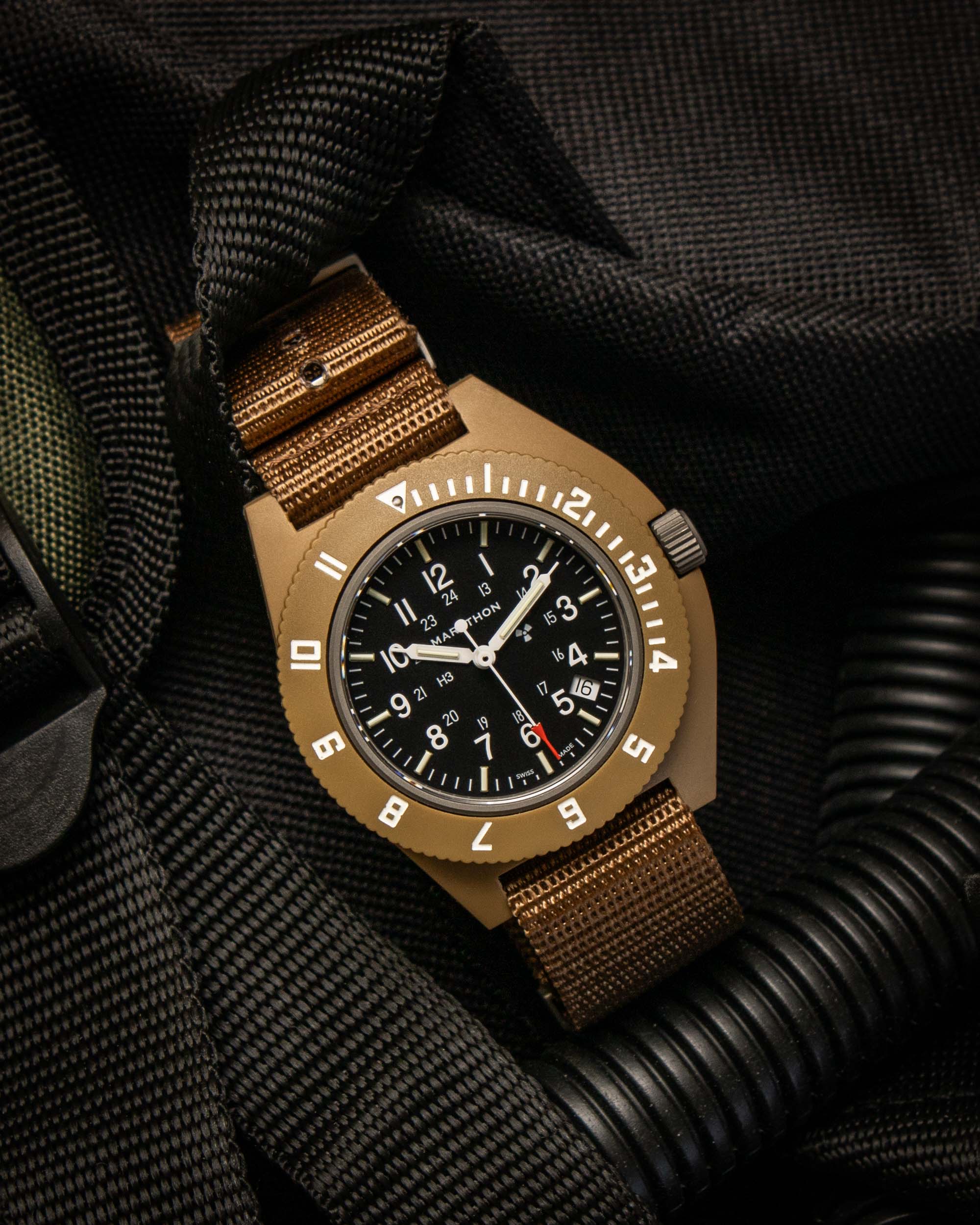
In a vacuum, the Marathon Navigator is an absolute home run of a watch, and it is ideally suited to be a person’s carefree, grab-and-go timekeeping companion. However, the current generation of the Navigator is quite a bit more expensive than what the brand was charging for its predecessors, and you are now looking at a retail price of $420 USD for the least expensive option and $480 USD to get your hands on the model featured here, which is the date-displaying version that comes with the premium NATO strap. While this still places the Navigator firmly on the affordable side of the spectrum, this budget-friendly industry darling now finds itself in a highly competitive price category with a number of compelling alternatives that arguably offer a more refined overall ownership experience. With that in mind, what you are paying for with the Navigator is a true Swiss-made timepiece that keeps its sole focus on utilitarian functionality. Few watches can rival the legitimate military heritage of the Marathon Navigator, and while it no longer represents quite the same bottom-dollar value proposition, it is still one of the best ways to get your hands on a proper mil-spec watch that is legitimately used for active duty. For more information on the Marathon Navigator, please visit the brand’s website.

